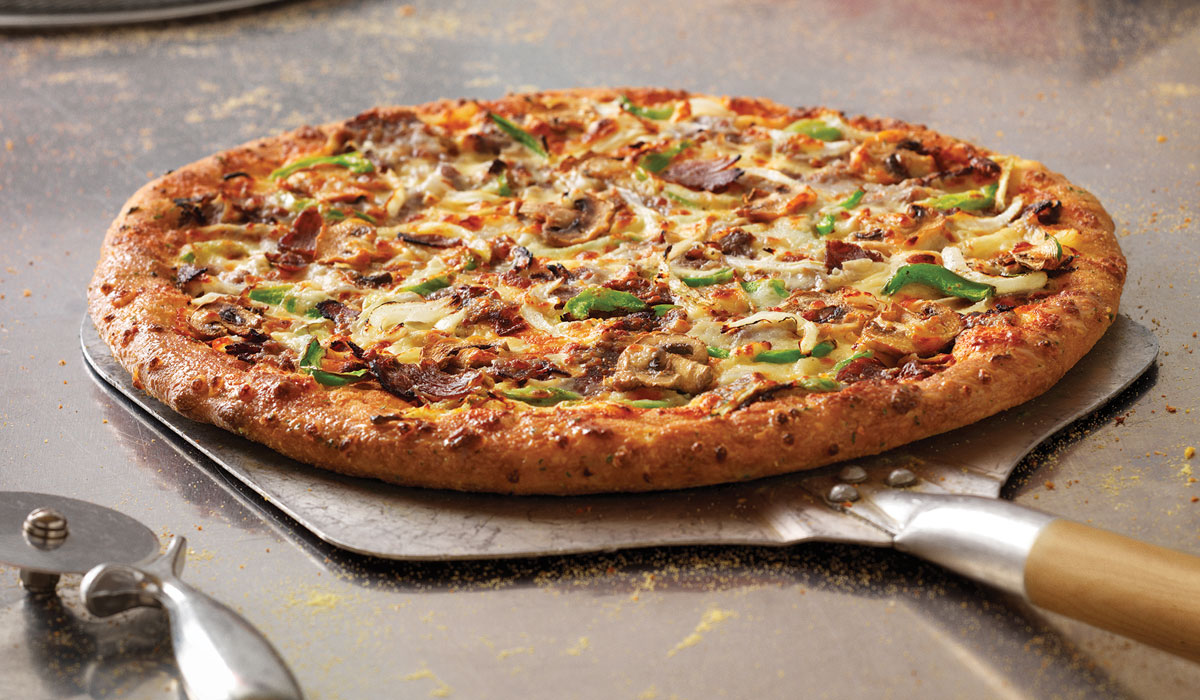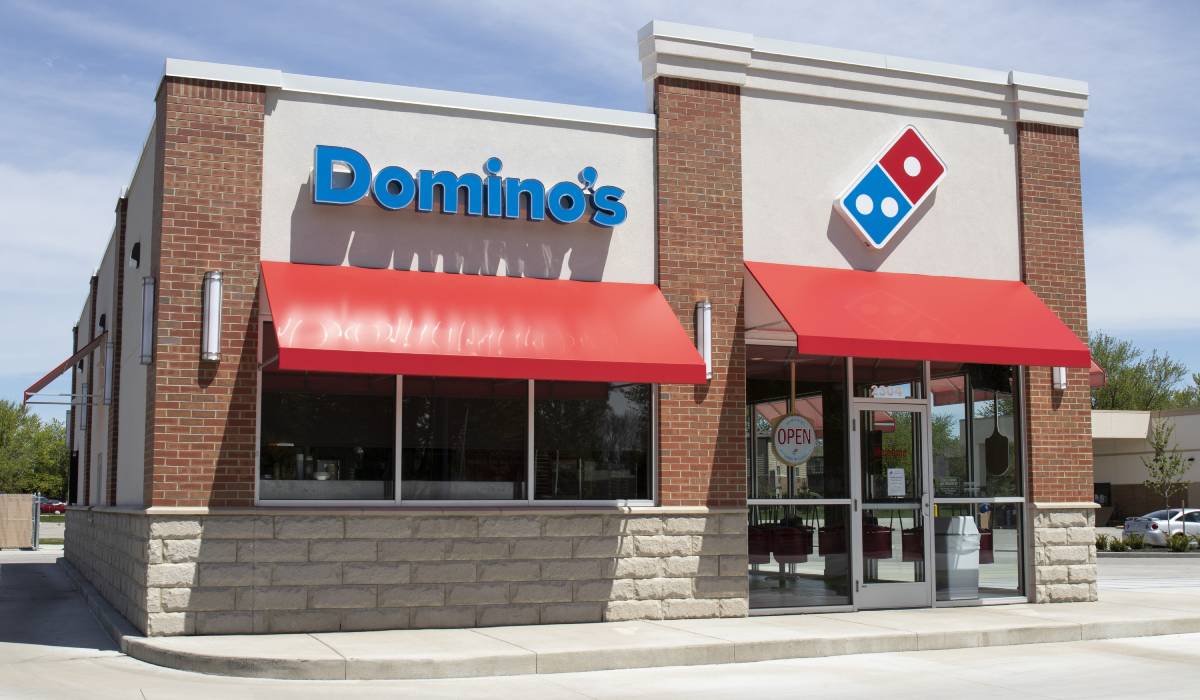Two years ago, Domino’s CEO Ritch Allison said he’d have a “tough time sleeping at night” if the pizza chain ever had to use a third-party driver to fulfill an order.
The brand has kept that stance, even to the point of offering a “surprise frees” menu promotion last year as an alternative to the surprise fees commonly associated with third-party delivery aggregators.
But Domino’s faces a much different environment in 2022. Because of staffing challenges in the first quarter, store hours were reduced, phones weren’t answered, and online orders were restricted. To put things in perspective, the number of combined lost operating hours equated to the entire U.S. system being closed for six days.
The conversation around delivery has now changed, and COO and U.S. President Russell Weiner opened the door to the possibility of future third-party partnerships.
“Nothing is off the table, but I have a lot of faith in the Domino’s system,” Weiner said during the chain’s Q1 earnings call. “We have quintiles that are doing [third-party delivery]. “But like I said, our job is to fulfill the demand that customers have for us. Luckily, we don’t have a demand problem right now.”
Among the U.S.’s top pizza players, Domino’s has been the most vocal about its disdain for third-party delivery aggregators, and the only one to consistently shy away from their services.
In contrast, Papa Johns has arguably been the biggest proponent. The chain not only claims third-party delivery provides an incremental contribution to strong same-store sales and industry outperformance, but it’s also seen the partnerships supplement labor pools during peak hours.
Papa Johns CEO Rob Lynch said these drivers helped stores stay open and kept them from turning off ordering mechanisms—much different from what Domino’s has experienced.
One out of every three pizzas in the U.S. is delivered by Domino’s, so instead of concerns about market share, the objective is to simply elevate its top positioning, Weiner said.
“But I want to be clear first, nobody in this country delivers more pizza than Domino’s Pizza,” the executive said. “So we have a lot of fantastic drivers there. I think the question is can we deliver more than more?”

After 41 straight quarters of positive same-store sales growth, Domino’s has seen declines in two of the past three (negative 1.9 percent in Q3, positive 1 percent in Q4, and negative 3.6 percent in Q1).
Breaking down first quarter results further, same-store sales dropped 3.2 percent at franchise stores and 10.5 percent at corporate units. Domino’s attributed the difference to company-run restaurants facing more substantial operational challenges and implementing conservative price increases. However, the company acknowledged that when adjusting for uncontrollables, company-owned units underperformed relative to similar stores owned by franchisees.
“This has not been the case historically, and the gap is being addressed by our leaders of that business,” Weiner said. “They are already several weeks into operations recovery plan with 30, 60, and 90-day milestones. “While corporate stores represent only 2 percent of our footprint around the world, they remain a critical strategic tool to develop talent and to test and refine innovation and in some instances, to accelerate the growth of an under-penetrated market. We must restore their leadership from a performance perspective.”
Because of Omicron’s surge, Domino’s Q1 started sluggish, but business returned to modestly positive same-store sales in February. However, comps turned negative as the pizza chain lapped the rollout of federal stimulus in March 2021, and the trend has continued into April. In Q2, the brand is competing against two-year same-store sales of 19.6 percent.
Delivery comps declined 10.7 percent in the first quarter, driven by declines in order counts, offset by higher average ticket. Restaurants in the top 20 percentile—which are appropriately staffed—experienced delivery sales that were 17 percentage points better than the bottom 20 percentile, and that gap keeps widening.
One bright spot is that delivery service times improved in 42 percent of stores year-over-year, with sequential rises each month during Q1.
Carryout comps rose 11.3 percent year-over-year, fueled by increases in average ticket, order growth, and Domino’s decision on January 31 to move its national $7.99 carryout deal to online only. Top and bottom-performing stores saw little difference in carryout sales, which makes sense considering the relatively low labor intensity associated with carryout.
Restaurants in the top percentile are positioned in highly fortressed markets, which bring better delivery service times and incremental carryout customers. The stores also have more drivers on the road, process new hires more quickly, and are led by tenured general managers, Weiner said.
“My job is to help everyone move to that top quintile,” said Weiner, who will take over as CEO in May. “But our job as well is to make sure that anyone who wants a Domino’s Pizza gets a Domino’s Pizza. And so while we continue to look internally for best practices, I will tell you nothing is off the table when we think about long-term and getting folks who want Domino’s their delivery order.”

The brand is taking a three-pronged approach to build sales volumes, including returning to core store hours and monitoring online ordering uptime, working with third-party call centers to take phone orders, and bringing back “boost week” promotions to drive customer acquisition and grow the loyalty program.
Weiner said between 2,500 and 3,000 stores will leverage call centers in some capacity by mid-May, and that number could grow depending on need. Alongside franchisees, corporate stores will test phone center options to understand the impact on operations, team members, customer service, and the P&L. Boost weeks will return this summer, and will likely continue in the same cadence as they did prior to COVID.
“I just got back from over the last month a listening tour where I visited with 155 of our U.S. franchisees over the last month,” Weiner said. “And what I can tell you that I heard was the only person more disappointed than the customer who can’t order Domino’s is the franchisee who owns that store and can’t serve that customer. We take so much pride. Our franchisees take so much pride.”
In addition to growing labor pressures, food cost inflation is expected to be 10-12 percent in 2022, up from the previously projected 8-10 percent. To mitigate these influences, Domino’s recently decided to raise the price of its $5.99 Mix and Match deal by $1 for delivery customers.
Weiner didn’t rule out another price hike coming.
“When it comes to pricing, we’ve been doing pricing analysis since we launched $5.99 here at Domino’s,” the executive said. “It’s not like we wrote it down on a piece of paper and decided to stick with it. And that architecture is not set in stone. There’s actually math and there are numbers behind all of it. … If things need to change to protect the consumer value proposition or to protect our franchisees’ profitability, we will do that.”
Domino’s opened a net of 213 restaurants in Q1, including 37 in the U.S. and 176 internationally. The chain ended the quarter with 19,061 units globally, with 6,597 domestically and 12,464 across the world.
In the trailing four quarters, Domino’s opened a net of 1,242 units.
“People say half empty half full, what is your glass?” Weiner said. “And my glass on U.S. development is half full and we’re going to fill it up more. And why I say half full is when you look at the pizza category in [quick-service restaurants] there is no one trailing 12 months, two years, three years, nobody has opened up as many pizza stores in the United States as has Domino’s franchisees.”










